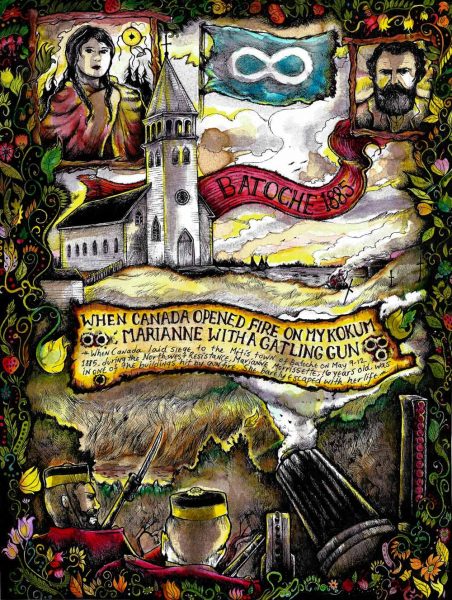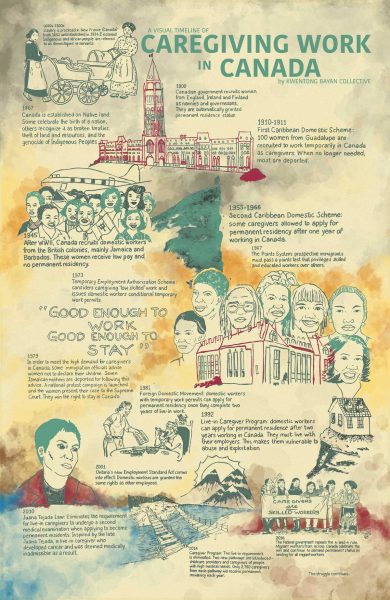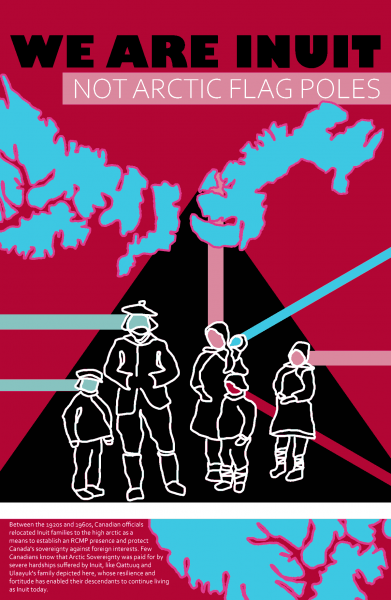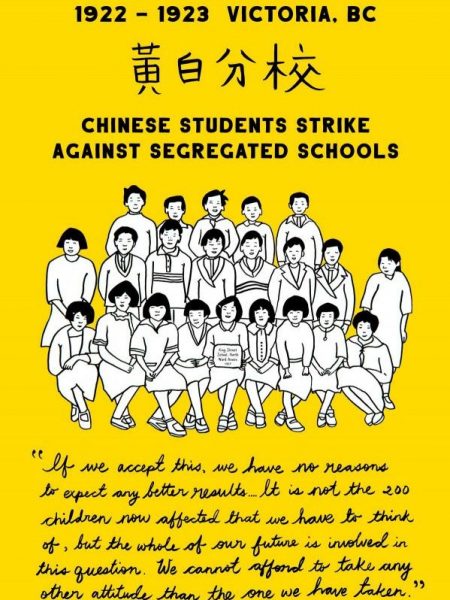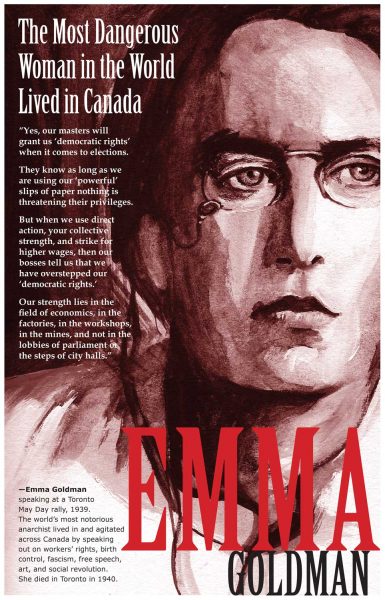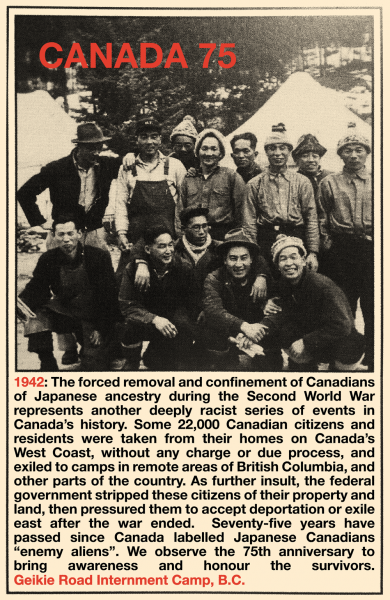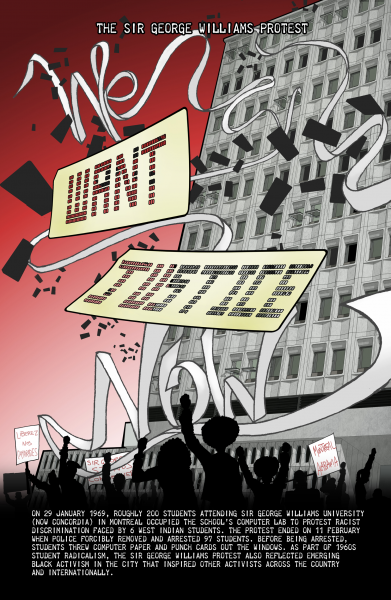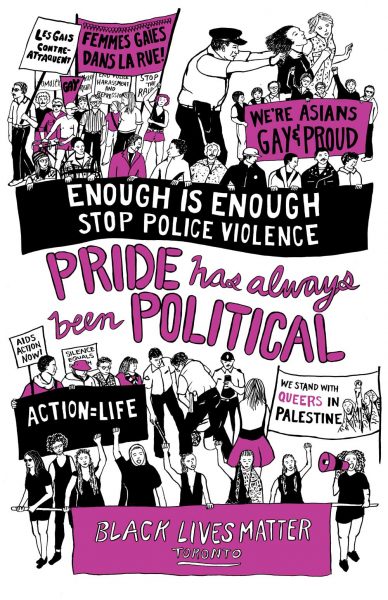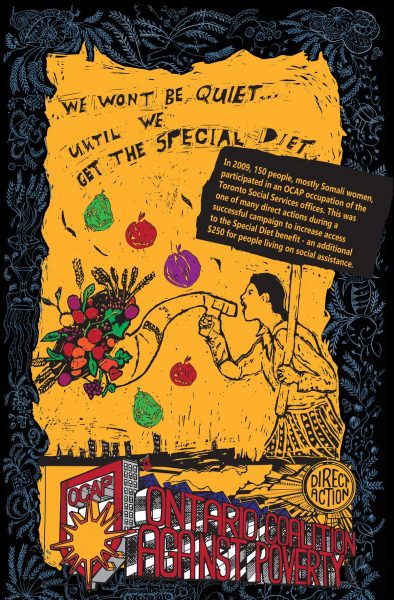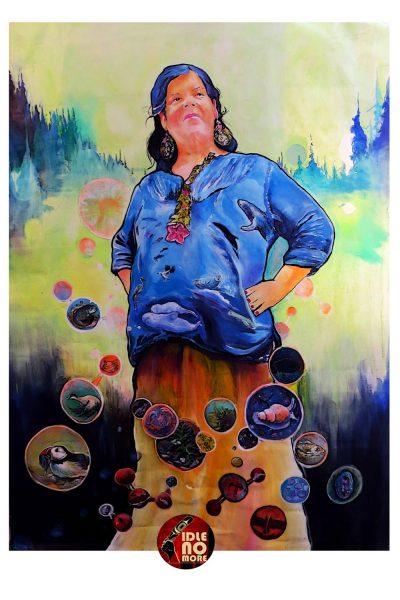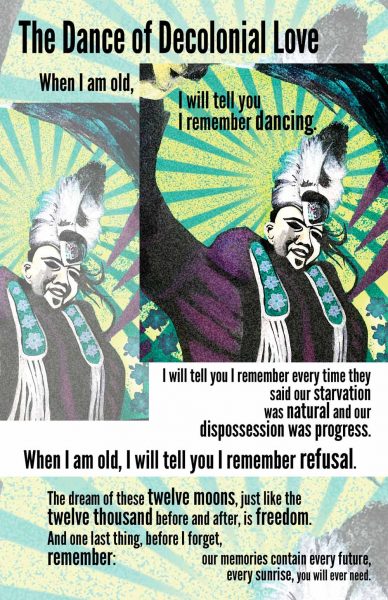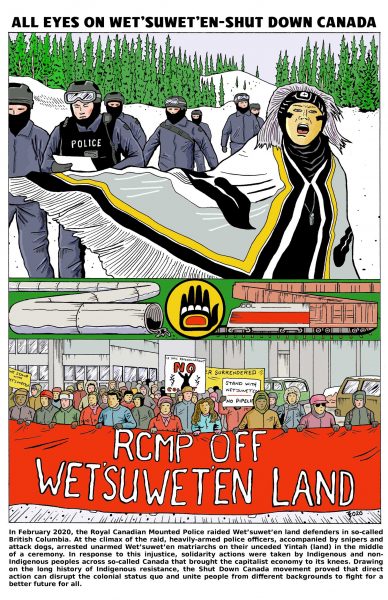Remember | Resist | Redraw Timeline
Chloe Cooley’s Resistance to Enslavement
Chloe Cooley’s resistance to re-enslavement in the States was so fierce that her captor needed the assistance of two other men to get her in a boat to cross the Niagara River in 1793. This wasn’t the only time she fought against her bondage before exiting Canada. Her defiance was the catalyst in eventually garnering legislative change and contributing to anti-slavery movements in Upper Canada, as well as set the stage for the Underground Railroad.
The 1837–1838 Rebellion: Consolidating Settler Colonialism in Canada
In the 1830s the struggle to abolish irresponsible colonial rule in Upper and Lower Canada, and replace it with a form of government controlled by local settlers rather than by imperial rulers or their appointed representatives, involved significant debate, public protest, threats of violence, and outright rebellion. While the 1837-1838 Rebellion is often celebrated as a defining moment in Canadian history when oppressed settlers fought for a voice in their own governance, it is important to remember that what resulted from this struggle was the imposition of the political framework necessary for settler colonialism to take hold in northern North America.
The Tsilhqot’in War
In 1864, Tsilhqot’in warriors, led by Chief Klatsassin, waged war on invading colonists who brought death, disease, and dispossession to Tsilhqot’in territory. The Colony of British Columbia tricked the warriors into being captured by promising a peace parley only to arrest and eventually execute six of the warriors by hanging. Before he was executed Klatsassin clarified, “We meant war, not murder.”
John A. Macdonald: Father of Confederation, Architect of Genocide
John A. Macdonald (1815-1891) is often celebrated for his role as one of Canada’s “Fathers of Confederation.” What is lesser known, however, is that Macdonald, as prime minister, played a pivotal role in creating Canada’s destructive system of Indian Residential Schools that sought to “kill the Indian in the child.” Foundational to Macdonald’s agenda was the dismantling of Indigenous families through forced separation. Canada’s first prime minister instigated, supported, and defended Canada’s genocidal system of Indian Residential Schools.
Conservation is Colonialism
Beginning in the 1880s and intensifying in the early 1900s, the federal government created a national network of parks that conserved “natural” areas and commodified them to contribute to the capitalist economy and nation-building. As part of this process, many Indigenous communities were forcibly displaced within the newly-established park boundaries. Starting in 1885, my ancestors, along with other Niitsitapi and Îyâhe Nakoda peoples, were forcefully removed from our traditional territories in what is now known as Alberta to help create Banff National Park. The Banff Indian Days were created in 1894 (and lasted until the 1940s) to entertain a train full of tourists who were stranded in Banff. What tourists did not know is that we used these performances to maintain connection and relation with our lands. We may have been displaced, but we have not been disconnected from our territories. To this day, we still use the places that our ancestors did.
When Canada Opened Fire on My Kokum Marianne With a Gatling Gun
Resenting the fact that their land was sold without consultation, the Métis took up arms against Canada in 1869, under the leadership of Louis Riel. The Métis Resistance was successful, and after a series of negotiations, the Métis entered Confederation with Canada with the 1870 Manitoba Act, which created the province of Manitoba. At Batoche, Saskatchewan, during the Northwest Resistance of 1885, the Métis would again take up arms to defend their land against the ever-expanding nation-state of Canada. When Canada laid siege to the Métis town of Batoche on May 9-12, 1885, during the Northwest Resistance, Marianne Morrissett, 16 years old, was in one of the buildings hit by gun fire. She barely escaped with her life.
Caregiving Work in Canada 1900-2016
Canadian families have always relied on domestic workers. This was true before Confederation, when Canadian families used Indigenous and Black women as slaves. This was also true afterwards, when the Canadian government recruited women from overseas to work as domestic workers. Due to its “white settler” policy, the Canadian government recruited British and Western European women to come as domestic workers because they were “mothers of the nation” and gave these women Canadian citizenship. In contrast, in the early and mid-1900s, women from the Caribbean came to Canada and were either individually sponsored by Canadian families or came under the Caribbean Domestics Scheme (CDS). Under the first and second CDS, which respectively took place between 1910 and 1911 and between 1955 and 1966, the Canadian government saw Caribbean “servants” as the beneficiaries of Canadian “generosity.” Most women under the first CDS were deported after their contracts whereas women under the second CDS could only apply for permanent residency (PR) after working for their employers for one year.
Canada’s Internment of Ukrainians, 1914–1920
Between 1914 and 1920, the Canadian government used the War Measures Act to intern 8,579 people, including 4,000 Ukrainians, all recent migrants from the Austro-Hungarian Empire. Internees responded to the ill treatment and exploitation they experienced with insubordination and resistance. They engaged in sabotage, like work slowdowns, and, in some instances, rioted or struck for better conditions.
The Flu Pandemic: Health Inequity and Social Change
Although long referred to by historians as the “forgotten pandemic,” countless families and communities have memories of the 1918–1920 flu: stories of their people, how they persisted, and how their lives were changed by a disease outbreak that killed over 50,000 Canadians and at least 50 million globally. For much of the 20th century, history did not much care about these stories of their lives. Rather, pandemic histories were suppressed and elided. Without societal remembrance of influenza as a health catastrophe, it was possible to forget the main lesson of the pandemic: how inequality shaped who lived, who died, and the future lives of survivors.
The Winnipeg General Strike
In May and June 1919, 35,000 workers in Winnipeg, Manitoba staged a six-week general strike. Workers from various backgrounds struck for higher wages and collective bargaining rights and to demand more power for working people. Ultimately, the strike was violently crushed by police acting on the orders of politicians and the city’s capitalists. Although the strike ended in defeat, it was not a failure. It demonstrated the power of working people and inspired new generations of workers to carry on the struggle to build a better world.
We are Inuit – Not Your Flag Poles
Between the 1920s and 1960s, Canadian officials relocated Inuit families to the high arctic as a means to establish an RCMP presence and protect Canada’s sovereignty against foreign interests. Few Canadians know that Arctic Sovereignty was paid for by severe hardships suffered by Inuit, like Qattuuq and Ulaayuk’s family depicted here, whose resilience and fortitude has enabled their descendants to continue living as Inuit today.
Chinese students strike against segregated schools
In July 1922, the Victoria School District Board voted to exclusively segregate all racialized Chinese students. When the order came into effect on September 5th, Chinese students were called out of their classes and marched down the road. Upon reaching one of the newly-established Chinese-only schools an older boy gave a pre-arranged signal and students disbanded in protest.
Cape Breton Coal Strikes
“They can’t stand the gaff!” The words failed to intimidate the coal miners. Instead, the insult contributed to their resistance, and “standing the gaff” became a rallying cry during the long 1925 strike. That strike was the culmination of the labour war in the Nova Scotia coal mines in the 1920s, an episode of class conflict in Canadian history as dramatic and consequential as the 1919 Winnipeg General Strike.
Radical Bookshops in 1930s Montreal
The Modern Book Shop and the Hidden Book Shop were important spaces for radical education and organization in Montreal between 1933 and 1938. As such they were frequently targeted by fascists and the police for selling “seditious literature,” mostly from communist newspapers like Vie ouvrière, a communist monthly, The Daily Clarion from Toronto, and Clarté.
The Most Dangerous Woman in the World
Emma Goldman was born in 1869 to a Jewish family in Kaunas, Lithuania. Fleeing the pogroms of Europe, she immigrated to the United States in 1885 and committed herself to anarchism. She was deported in 1919 for her anti-war activities, and then after years of exile in Europe, Goldman came to Canada in 1939. She used her extraordinary oratory skills to help develop an active anarchist movement. Her lectures on various subjects inspired large enthusiastic crowds across Canada. Goldman encouraged local anarchists to organize, and they formed the Libertarian Group. They held anti-fascist demonstrations, supported refugees of the Spanish Civil War, and held weekly political discussions.
The Japanese Canadian Internment
In 1942, the federal government labeled 22,000 Japanese Canadians (over 75% were Canadian citizens) “enemy aliens.” In response to Japan’s attack on Pearl Harbour in 1941, Canada declared war against Japan. Soon after, without any charge or due process, the government forcibly relocated Canadians of Japanese heritage living on the West Coast to internment camps in remote areas of British Columbia and other parts of the country. The RCMP also shut down Japanese Canadian schools and Japanese language newspapers. To pay for internment, the government seized and sold the land, property, and belongings of Japanese Canadians without the owners’ permission and at a fraction of the value.
Operation Profunc 1948-1983
RCMP spying’s extent and secrecy was the thirty-five-year long covert program that began in 1948: Operation Profunc (PROminent FUNCtionaries of the Communist or Labor Progressive Party). This program planned to arrest Canadians in the event of a Communist-led attack or a leftist insurgence from within Canada’s own borders. Those arrested Canadians would be interned in remote but accessible camps across the country. The Profunc planners pulled the design of these camps from the Second World War internment of Japanese-Canadians, communists, and Italian and German nationals. At its height in the mid-1950s, Operation Profunc kept lists of thousands of Canadians to intern if the need arose and chose a dozen sites as future internment camps.
1968-2017: Intergenerational Resistance in Vancouver’s Chinatown
In 1968, Bessie Lee, along with women and mothers of the community, co-founded the Strathcona Property Owner’s and Tenants Association (SPOTA) to stop “urban renewal” plans from the City of Vancouver, including the construction of a freeway that would demolish the neighbourhood. Through these efforts, they stopped the freeway from being built and spared neighbourhood residents from further displacement. In 2017 the community faced renewed threats of displacement due to the proposed development of a luxury condominium building. Anticipating that this project would worsen unaffordable housing and loss of cultural heritage, organizers mobilized again. On November 6, after the city’s development permit board listened to nearly a hundred speakers, people throughout the Chinatown community celebrated when the official building proposal was rejected.
The Sir George Williams Protest
On 29 January 1969, roughly 200 students attending Sir George Williams University (now Concordia) in Montreal occupied the school’s computer lab to protest racist discrimination faced by six West Indian Students. The protest ended on 11 February when police forcibly removed and arrested 97 students. Before being arrested, students threw computer paper and punch cards out the windows. As part of the 1960s student radicalism, the Sir George Williams protest also reflected emerging Black activism in the city that inspired activists across the country and internationally.
We Still Think of the Yukon as Our Land
“We still think of the Yukon as our land,” wrote the Yukon Indian People in Together Today for Our Children Tomorrow, a document created by the Council of Yukon Indians (now, Council for Yukon First Nations) and submitted to Prime Minister Pierre Elliott Trudeau in 1973. The document outlined a series of grievances that Indigenous peoples in the Yukon had with the territorial and federal governments about their mistreatment of the people, land, water, and animals. To address this mistreatment, the Yukon Indian People called on settler governments to negotiate land claims. Today, 11 of the 14 First Nations in Yukon are self-governing and have signed land claims agreements with the Yukon Government and Canada under the Umbrella Final Agreement (UFA), a modern treaty.
Justice for Grassy Narrows
For the past 50 years, women, youth, and the community have led a movement to address the industrial mercury poisoning of their people, to protect their land, and assert their sovereignty. We remember those who are no longer here, those who are fighting today, and the future generations of resistance.
Pride Has Always Been Political: 1970s – 2016
Pride started off as the celebration of the rebellious origins of the queer and trans liberation movements in resistance to police repression in the later 1960s. In so-called Canada, Pride originated in the Montréal resistance to the Olympic police repression in 1976 and to the raid on the Truxx bar in 1977. It was these revolts in the streets that led to Québec enacting sexual orientation protection in late 1977. This resistance continued in Toronto with the mass response to the 1981 bath raids which at that point were the largest mass arrests since the War Measures Act in 1970. It was this resistance that provided the context for the celebration of Lesbian and Gay Pride Day to mark the Stonewall riot in June 1981 in Toronto which has continued to today.
Kent Prisoner’s Hunger Strike
In late March, 1983, two Indigenous men began a hunger strike at Kent prison in Agassiz, BC protesting the prison’s unwillingness to provide access to spiritual practices. Prison officials refused to take action, by mid-April, eighteen other Indigenous prisoners joined the strike. On April 18, Sts’ailes Stó:lō woman Rose Charlie, president of the BC Indian Homemakers Association, wrote to the Minister of Indian Affairs condemning the lack of cultural accommodation for Indigenous inmates at Kent.
Charles Roach: Warrior, Prince, and Servant of His People
In 1988, the iconoclastic Charles Roach launched a battle against the Canadian government to remove the oath to the Queen as a condition of Canadian citizenship. In 1992, the Court of Appeal threw his case out, but in 2012 Roach, battling a life threatening illness, launched a similar suit: “I cannot see myself taking the oath to a symbol that is racist…. It is against fundamental freedoms.” Roach’s fight for fundamental freedoms and his moral outrage at the notion of having to pledge allegiance to a British monarch—a figure who for him represented colonization and slavery—typified the life’s work of one of Canada’s most important Civil Rights activists and champions.
The Seige of Kanehsatà:ke
In 1990, Kanien’kéha:ka (Mohawk) of Kanehsatà:ke erected a barricade on a secondary road to prevent the Club de golf d’Oka’s plan to expand their 9-hole golf course and construct luxury condominiums on unceded territory, including a burial ground and pine forest. On 11 July, a para-military squad of the Sureté du Québec raided the peaceful barricade sparking a 78-day siege, commonly known as the Oka Crisis. Fundamental human rights were violated by both the SQ and Canadian Army, condoned by all levels of government. While the pine forest was saved, the long standing historical land issue in Kanehsatà:ke has never been resolved. The struggle continues.
Ts’Peten 1995
The siege of Ts’Peten (Gustafsen Lake) occurred in the south-central interior of “British Columbia” in the summer of 1995, after a white American ranger began harassing an Elder and his family at ta Secwepemc Sundance camp. Warriors responded to the Elder’s call for help, and the Royal Canadian Mounted Police (RCMP) began a large paramilitary operation to clear out the defenders, deploying some 450 officers, mostly heavily armed Emergency Response Teams. They also received assistance from the Canadian military. On September 11, the RCMP carried out an ambush on the defenders that resulted in a massive explosion and firefight, during which they fired tens of thousands of rounds. During a year long trial it was revealed that the RCMP had carried out a “smear and disinformation” campaign to discredit the defenders and justify the use of lethal force. The defenders asserted that neither the government nor the police forces have jurisdiction on unceded, sovereign Indigenous territories.
Calgary Laundry Workers Strike
In the early 1990s the Alberta Progressive Conservative government began a campaign of eliminated tens of thousands of public sector jobs and cutting wages. In 1995, when the Calgary Health Authority announced a contracting out of hospital laundry workers’ jobs, 60 laundry workers called in sick. Within ten days about 2,500 workers in six hospitals and nine nursing homes were wildcatting and hundreds of other healthcare workers were working to rule.
OCAP Confronts Austerity in Ontario
In 2009, 150 people, mostly Somali women, participated in an OCAP occupation of the Toronto Social Services offices. This was one of many direct actions during a successful campaign to increase access to the Special Diet benefit — an additional $250 for people living on social assistance.
Idle No More Quebec
Melissa Mollen Dupuis is an Innu woman, mother, leader, cultural ambassador, and co-organizer of the Idle No More movement in the area known today as Quebec. Water protection is a sacred responsibility of all women. Being pregnant shows the continuity of the stewardship of this sacred river (Shipu — “river” in Innu) that connects us from our mothers to daughters. It is also the living heritage, proof, and memory of water being the beginning of humanity, highlighting our responsibility to protect it to ensure it flows freely for the next seven generations.
Idle No More: The Dance of Decolonial Love
When I am old, I will tell you I remember dancing.
I will tell you I remember every time they said our starvation was natural and our dispossession was progress.
When I am old, I will tell you I remember refusal.
The dream of these twelve moons, just like the twelve thousand before and after, is freedom. And one last thing, before I forget, remember: our memories contain every future, every sunrise, you will ever need.
The Fight for Affordable Housing in Hamilton, Ontario
In 2018, tenants in four high-rises in Hamilton, Ontario waged a seven-month rent strike fighting a landlord whose profit model involves displacing working-class people through gentrification. The strike did not prevent the landlord from imposing a steep rent increase. However, the collective power and sense of community the tenants forged through struggle created a strong foundation for the ongoing fight for affordable housing.
Shut Down Canada
In February 2020, the Royal Canadian Mounted Police raided Wet’suwet’en land defenders in so-called British Columbia. At the climax of the raid, heavily-armed police officers, accompanied by snipers and attack dogs, arrested unarmed Wet’suwet’en matriarchs on their unceded Yintah (land) in the middle of a ceremony. In response to this injustice, solidarity actions were taken by Indigenous and non-Indigenous peoples across so-called Canada that brought the capitalist economy to its knees. Drawing on the long history of Indigenous resistance, the Shut Down Canada movement proved that direct action can disrupt the colonial status quo and unite people from different backgrounds to fight for a better future for all.





